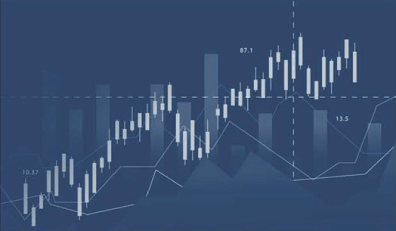Steps to Managing Risk: Systematic Risks vs. Behavioral Risks

Buried in the footnotes of mutual fund prospectuses, brokerage account opening paperwork, and account statements are disclosures of “the risks to investing,” which is potentially a daunting statement for any new investor.
One definition of risk is the possibility of an outcome preventing the attainment of a financial goal. Understanding the sources of risk and what may impact achieving your investment goals are just a few of the important steps in managing risk.
The sources of risk can be broken into two broad categories. The first can be considered Systematic Risks reflecting broad objective influences on investment options such as:
- Market risk – broad factors such as the health of the overall economy.
- Interest rate risk – the level and direction of borrowing costs that have a pronounced impact on bonds and fixed income investments but can also impact stocks.
- Business-specific risks – which reflect the skill of corporate management and the opportunities for a company to grow or stay in business.
To varying degrees, all investments are subject to these examples.
A second source of risk is unique to the investor. We call these Behavioral Risks and a few examples include:
- Concentration risk – the adage of having all your eggs in one basket or more so having only one egg in one basket.
- FOMO – or fear of missing out; following a trend that seems like a “sure thing” without understanding what’s driving a stock’s price in the first place.
- Loss aversion – no one likes losing money, however, focusing on short-term price fluctuations and an unwillingness to tolerate declines can be hazardous to your long-term wealth.
How should we think about managing risk and attaining investment outcomes? There is an adage that risk and return go hand in hand: more risk leads to more return, which is true to an extent. A better way to think about this is more uncertainty leads to potentially more return.
Think about the two most popular types of investments: fixed income (or bonds) and stocks. With a bond, you are lending money to a company or a government that promises to pay you back a fixed amount of income over a period of time plus the amount originally lent (or invested). If they promise to pay you back tomorrow or a year from now there is generally less uncertainty than if they were to pay you back ten years from now. Of course, given the certainty of the return on a bond due tomorrow or a year from now, the risk will likely be less than if the repayment is ten years from now, so we can consider that less uncertainty (risk) equals less return.
If you own a stock, you have a claim on earnings after all bills have been paid, including to any bondholders who lent the company money. Those earnings will vary based on the success of the business plan, and in turn, the claim to those earnings will vary based on the availability of other investments. Also, there is no guarantee to pay on a particular date like with a bond, causing more uncertainty.
Understanding the uncertainty involved with an investment, and the reason why you’re investing is the first step in understanding the risk of investing.
If you’re investing money to fund an essential purchase (perhaps a home) in the near term (the next three years), the uncertainty of investing solely in stocks would make them a risky investment.
On the other hand, if time is on your side, the payback from a bond may not produce enough of a return. Let’s say you’re in your twenties and investing for retirement forty years in the future. There is ample time to smooth out the day-to-day uncertainty of a stock’s return to yield a better return over the long term.
Understanding the certainty of an outcome, the time you have to attain a goal and the importance of that goal to you are the best ways to assess the riskiness of an investment.
This communication is provided by Bryn Mawr Capital Management (“BMCM” or “Firm”) for informational purposes only. Investing involves the risk of loss and investors should be prepared to bear potential losses. Past performance may not be indicative of future results and may have been impacted by events and economic conditions that will not prevail in the future. No portion of this commentary is to be construed as a solicitation to buy or sell a security or the provision of personalized investment, tax or legal advice. Certain information contained in this report is derived from sources that BMCM believes to be reliable; however, the Firm does not guarantee the accuracy or timeliness of such information and assumes no liability for any resulting damages.
Bryn Mawr Capital Management, LLC. is an SEC registered investment adviser and a subsidiary of WSFS Financial Corporation. Registration as an investment adviser does not imply a certain level of skill or training.
INVESTMENTS: NOT A DEPOSIT. NOT FDIC – INSURED. NOT INSURED BY ANY FEDERAL GOVERNMENT AGENCY. NOT GUARANTEED BY THE BANK. MAY GO DOWN IN VALUE.



